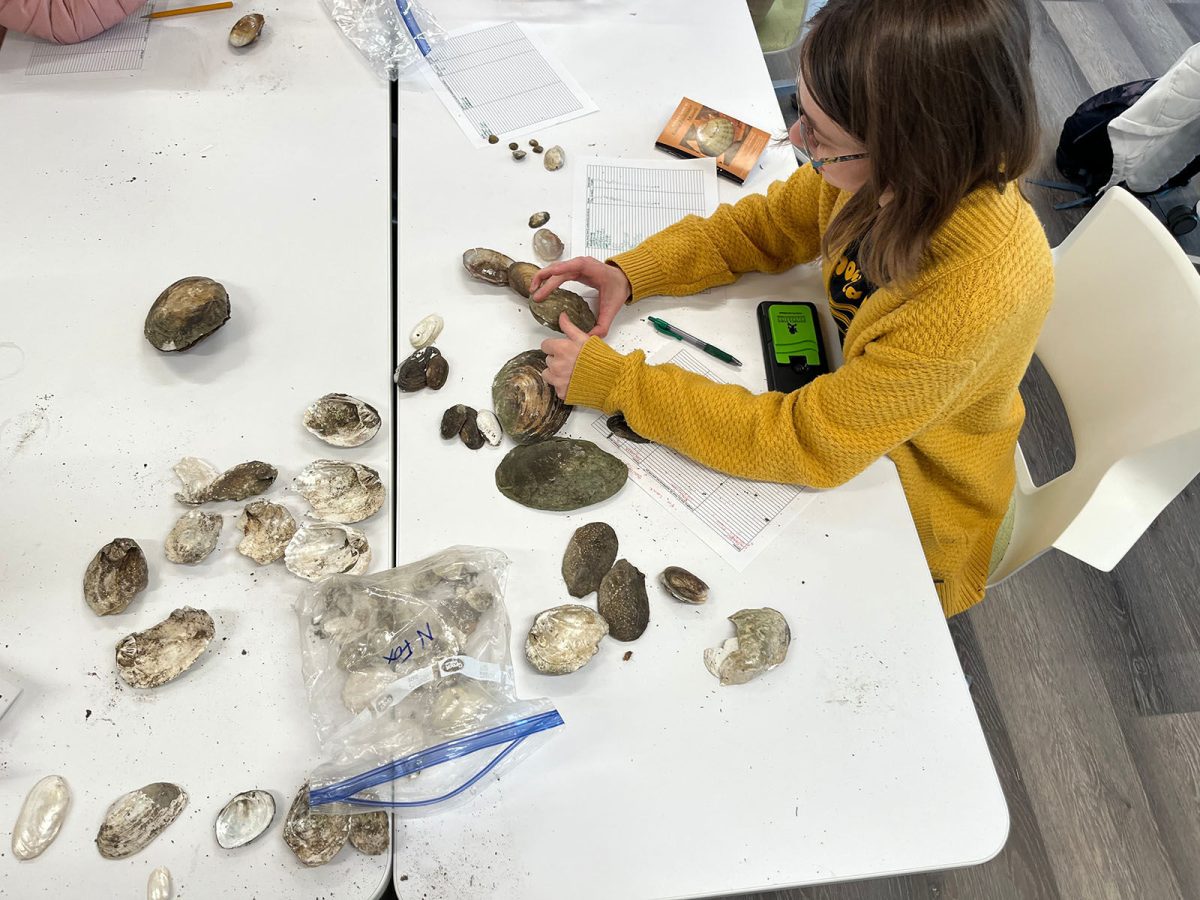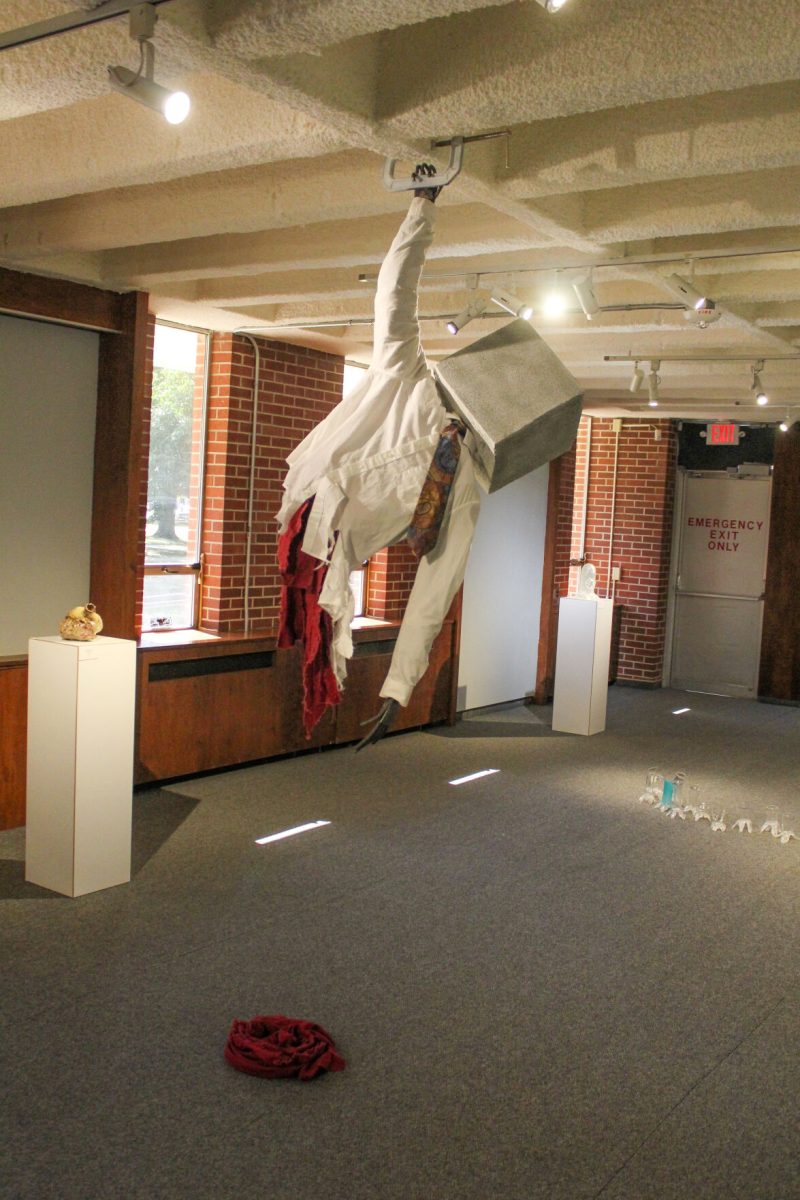Sex and shells were the topics of discussion at the Profit Aquatic Research and Outreach Center March 24. Emporia State students learned the complex reproductive cycle of mussels as well as tips for mussel identification from scientists from the Kansas Department of Health and Environment (KDHE).
Mussels are freshwater mollusks that live in riverbeds. Kansas has 48 species of mussels.
“In North America, which happens to be the epicenter of freshwater mussel diversity, we have about 300 species total,” said Clint Goodrich, an environmental scientist at the KDHE, during the event. “Unfortunately, because of their life history characteristics, they are the most endangered group of animals. About 10% of North American species have gone extinct.”
The ‘life history characteristics’ Goodrich alluded to is the complex reproduction cycle of mussels, which requires a fish host to be completed.
Once the eggs are fertilized, female clams will attract a fish, bite down on it, and inject the embryos into the fish’s mouth. The embryos attached to the gills fall off once they finish development, according to A Pocket Guide to Kansas Freshwater Mussels.
Certain mussels require a specific species of fish host to complete this cycle, explained Rachel Bowes, assistant professor of biology and the Jones Endowed Professor of Aquatic Sciences at ESU.
“If their host fish is doing poorly, then they (mussels) are going to do poorly,” said Bowes. “If we know that the mussel is in decline, we might try to make sure their host is doing well. Sometimes we will manage the fish in order to manage the mussels.”
Poor water quality is also affecting mussel populations. Native mussels are sensitive to chemicals in water, whereas invasive mussels, like the Asiatic mussel, aren’t as sensitive; allowing them to thrive in Kansas’ waterways, according to Bowes.
In addition to learning about mussel sex, students got to practice mussel identification with specimens collected last semester from Fox Creek, which runs through Tall Grass Prairie.






